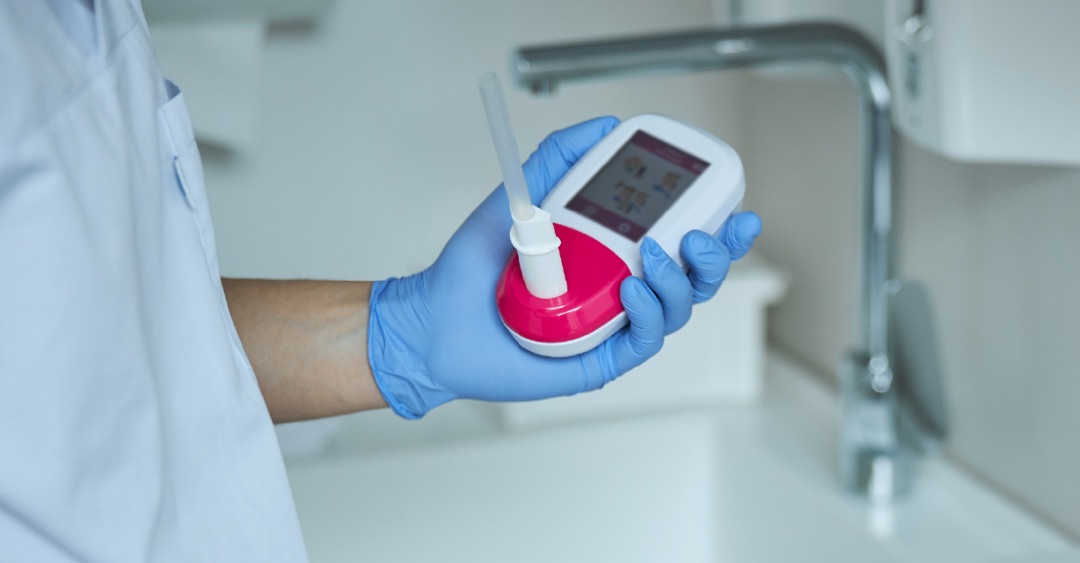A spirometry test helps you and your doctor determine how well your lungs are working. However, it is difficult to know what to expect when you arrive at the clinic or office. What should you tell your doctor about yourself? How will the test work? And what will happen after the doctor completes the assessment? We have answered these questions and more in this complete guide to spirometry tests.
What is a spirometry test?
A spirometry test is a simple breathing test. It measures the volume of air you inhale and exhale and how quickly you do it. The test provides your doctor with a snapshot of your lung function and helps diagnose breathing problems, such as asthma or chronic obstructive pulmonary disease (COPD). The test also allows doctors to evaluate how well the treatment works.
To perform the spirometry test, you will breathe into a mouthpiece connected to an instrument called the spirometer that measures air flow rates and volumes. The test result is called a pulmonary function study (or PFT).
Who Should Get Tested?
People who have symptoms of lung disease, such as coughing, shortness of breath, or chest pain. Those who have had a lung infection may also want to get tested. People subjected to respiratory hazards at work are also candidates for testing.
According to WebMD, people over 40 years of age or younger with a family history of lung diseases, such as emphysema or chronic bronchitis.
What can I expect during a spirometry test?
Spirometry tests are simple to perform, painless and noninvasive. You will be in and out at your doctor’s office or clinic in no time, but you must do the test correctly. It will ensure you get accurate results, and your doctor or health practitioner will get the information they need to diagnose and properly treat any lung condition or disorder.
You can expect the entire process to take about 15 minutes. Including preparation and reviewing the results with a medical professional.
Before you begin the spirometry test, your provider will ask you to remove any tight-fitting clothing around your chest or neck, such as a scarf or tie. They may ask you not to eat or drink anything for 30 minutes before testing because that could affect the results. They may also have you sit down for up to 15 minutes before testing begins so they can get an accurate measurement of baseline lung function while you are at rest.
Some other things to expect during a spirometry test include:
- The doctor will explain how a spirometer works and what it measures.
- Doctors will show you how the test functions using either an incentive spirometer or a flow meter.
- Several attempts at inhaling, exhaling, and breathing into the equipment as instructed by your physician or healthcare provider.
- Analyze these attempts to determine the correctness of the test, the speed at which the doctor performed it, and whether any readings required extra attention.
How often should I get a spirometry test?
When should you get a spirometry test? It depends on your health history and the purpose of the test. For example, the doctor may ask you to have spirometry tests if you have health conditions like asthma or chronic obstructive pulmonary disease (COPD). If a doctor suspects that you have a lung condition, they might also ask for spirometry testing.
In other cases, you may only need one spirometry test. For example, some employers require workers in certain positions to take this test before working with hazardous materials. A one-off test is also suitable for people who want to know what their lung function looks like at that moment in time. It can help them see how many smoking or other habits affected their lungs, like vaping or using chewing tobacco.
Questions To Ask Your Doctor Before Getting A Test Done
If you are concerned about your lung health, it is good to ask your doctor questions before getting a test done. For example, find out what the doctor expects during testing when you should expect results, and how long it will take. Your doctor should also be able to give you information on what happens after a test has taken place.
Are there any risks associated with spirometry tests?
Spirometry tests are safe and risk-free. If you feel lightheaded or faint during the assessment, let the technician know immediately. The technician will probably ask you to stop blowing into the mouthpiece. You should feel better within a few minutes.
Most people can resume their normal activities after having a spirometry test done, as there should be no lingering effects.
Is there any preparation required for a spirometry test?
To get the most accurate reading from your test, do:
- Avoid eating an enormous meal before your test.
- Do not smoke or exercise before your spirometry test.
- You should refrain from taking any medication that may affect your breathing. Such as inhaled steroids and bronchodilators, for at least 30 minutes before your test if you are on medication for breathing problems, such as asthma.
Related: All you need to know about kidney function test
What happens after my spirometry test?
After your spirometry test is complete, the results will be analyzed and stored. If you have a history of lung problems and other previous test results to compare them with, the doctor will do this as well. You will be informed of your test results once they have been processed by the doctor. Usually, there is no need for further testing if your test results are healthy. If your results are abnormal, more tests may be necessary to determine why you have reduced lung function.
It’s always advisable to follow up with your family doctor for further information after a spirometry test. Even if only for reassurance that everything checks out okay!
Interpretation of results
Several spirometry tests measure specific aspects of lung function, including:
- FEV1: Forced expiratory volume in 1 second is the amount of air exhaled during the first second of a forced exhalation from maximum inspiration.
- FVC: Forced vital capacity is the total amount of air exhaled after a full breath.
- PEF: Peak expiratory flow rate measures the maximum speed at which you can force air out. After taking a deep breath (within 6 seconds).
In conclusion, if you’re looking for reliable and accurate results in a comfortable environment, the Medbury Life-check center is where to be. We offer you a friendly, calming atmosphere and professionals dedicated to your satisfaction. Contact us today to schedule an appointment.







No Comments